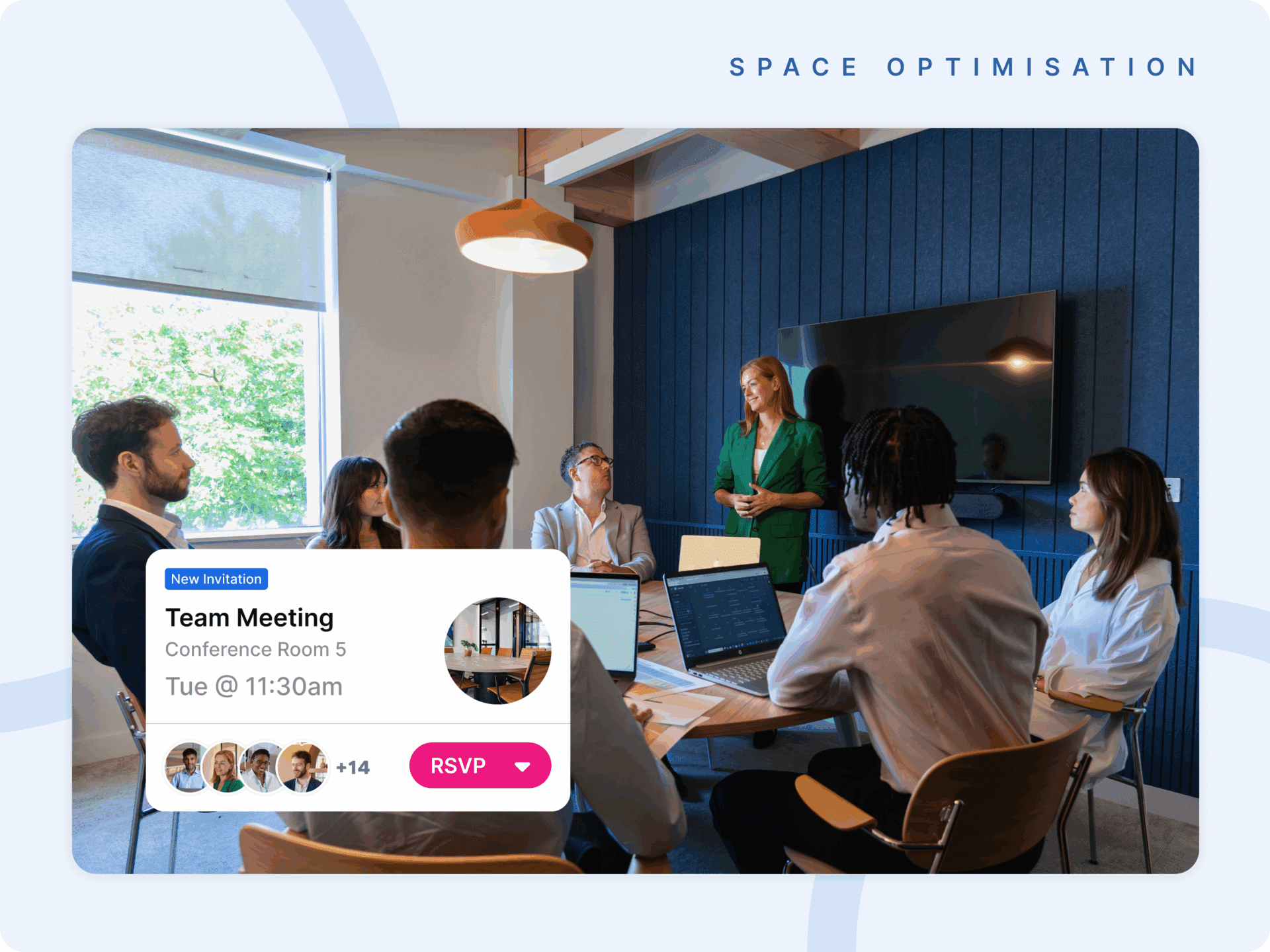When hot desking first came on the scene in the 1980s, it was fresh, modern – a faster, more efficient way of doing things. Many saw it as the antidote to the tired, traditional office: a sea of desks cluttered with files, dusty, framed photographs and coffee-stained mugs. Others regarded it as a threat to the personalization of the workplace, and a time suck when it came to finding a space to work. Hot desking anxiety became real.
What Does The Office Look Like Today?
A lot has changed since the 1980s. Faster wi-fi, cloud-based IT systems, and paperless office policies mean we are less wedded to our personal desks; our photos are on our phones, our files floating in the cloud – but it was the pandemic that delivered the kicker. Working from home had to become the norm and we all realized there must be a way to combine the benefits of home with those of the office: a more flexible approach, more tailored to teamwork than to presenteeism. Is hot desking part of the answer or dead in the water (cooler)?
Is Hot Desking A Hot Mess?
Ryan Anderson aptly describes the experience as a “hot mess” when not implemented thoughtfully. He argues that unassigned desking often erodes a sense of belonging among employees and fails to account for the varied ways in which people work best.
Unassigned desking assumes that all employees can thrive in a one-size-fits-all model, ignoring the nuances of collaboration, focus work, and personal preferences. The reality is that people value spaces that allow them to feel comfortable and productive.
Instead of defaulting to unassigned desking, companies should aim to design spaces that prioritize intentionality and adaptability. Flexibility in the workplace is not synonymous with a lack of structure; it’s about creating environments that support diverse needs and working styles. This means offering a variety of spaces—from quiet zones for focused work to collaborative hubs—and ensuring that employees feel they have a home base, even if it’s not a permanently assigned desk.
With this in mind, let’s dive into whether hot desking could work for your team.
Hot Desking Statistics
There is an increasing demand for hot desking statistics because they indicate whether flexible workplace management is effective for businesses in the future. Here are some of these statistics to look at.
- 67% of small businesses already offer employees flexible working arrangements because of the practical benefits. Hot desking offers small companies a competitive edge.
- Hot desking removes the 40% of dead space that most companies experience daily in the workplace. This flexibility saves dead costs from overhead costs.
- 73% of employees are more satisfied with hot desking and flexible working opportunities. While it’s hard to quantify happiness, many employees agree that hot desks provide better work satisfaction levels.
- Now, 77% of your potential employees consider flexible work arrangements before choosing an organization. This is becoming an incentive for business success because hot desking attracts an excellent work culture and new talent.

However:
- 20% of full-time employees don’t have the tools to navigate the dynamism of hot desking in the office. Nevertheless, this is an issue that is easily solved with the right software solution, like Kadence.
- Older workers are also not entirely enthusiastic about lugging personal belongings and laptops from one place to the other.
Knowing this, is hot desking for you?
Things To Consider Before Hot Desking Your Workplace
Hot desking is indeed a treasure trove for businesses, but it is not for everyone. Case in point, if your employees handle extremely sensitive information or your employees need a consistent working structure, it would be best to have a private and consistent office solution.
And what are the demographics of your office? Do you have more full-time workers than you do part-time workers? Do you have any excess space in your office, or is every room occupied? What type of work does each department do?
Finding the answers to these questions should help you determine whether moving to a hot desking office structure will work positively for the future of your business. For instance, if you have a higher percentage of younger workers, arrange a small private space in your office for permanent workstations.

Then retain the advantages of hot desking elsewhere. Check with your employees and see how they feel about sharing desks with other colleagues. You might find that most of your workers fall under the 27% that prefer permanent workstations, and moving them to flexible schedules results in loss of office motivation and work satisfaction. Sometimes, it leads to high turnover.
Regardless, resolving any of these challenges can be easy with the right creativity and resourcefulness. You also need to understand the pros and cons of hot desking.
The Pros And Cons Of Hot Desking
The Pros
- Hot desking encourages connection, creativity, and collaboration between teams when it works well. It can lead to serendipitous encounters and break down hierarchies, with different departments and junior and senior staff sitting side by side.
- And because there’s no barrier to teamwork, hot desking increases the level of engagement and productivity in the office. Remote or field-based employees also have a community to go to when they need support, motivation, or collaborative efforts.
- Hiring remote workers without upfront investment grows your business and team. You can use individual agreements to scale your business into new markets, either temporarily or permanently. Temporary agreements allow you to withdraw when necessary since you incur no loss of investing in a new office.
- Access to remote workers allows you to hire top talent worldwide since you are not restricted by location. You can grow your team based on talent, which, in turn, enhances your business agility and growth.
- An office set up will usually have a clear desk policy, and studies show that an uncluttered workspace is good for productivity. No more messy piles of paper, Post-It notes and dirty cups. And because it works with fewer desks, cut real estate costs, as well as freeing up space for breakout rooms or relaxation areas.
The Cons
On the downside, it can take extra time to find a desk without clear indication whether a desk is available or not. Without an overview of where everybody is sitting, you may waste time searching for your colleagues – a 5-minute chat with a co-worker could involve a half-hour mission to track them down. This is why a booking system like Kadence becomes essential.
The experience is also less focused on the personal calendar on the wall, photo on the desk, and perfectly adjusted chair. All these represent an employee’s individuality that inspires loyalty and motivation for work.
How To Manage Desks
If anything, the demands of the hybrid workplace will need companies to embrace a flexible desking approach on a much larger scale than ever before. But without a proper hot desk booking solution, it could easily become a logistical minefield.
Employees wandering around the office will be frustrated and come into contact with more people than they needed.
The answer? An evolution in desk management (now commonly known as ‘desk hoteling‘) puts the focus on desk reservation, allocation, health and safety of your employees. Desk booking software, such as Kadence, is the key to managing hot desks safely and effectively.
What Features Should Hot Desk Booking Software Include?
A good hot desk booking solution should feature an easy-to-use app that allows employees to book a desk easily with the right amenities they need, check-in when they get there, or even book a desk where colleagues are sitting nearby.
With proper desk booking software, you can overcome the original hot desking model’s drawbacks and enable employees to collaborate safely in their office environment by addressing health and safety concerns. Space planners can use insights from the usage data to load balance across the week, manage cleaning schedules with better forecasts and quicker desk turnaround.

A Workplace Revolution
We’re witnessing a revolution in the world of work. Static, cluttered offices make way for a new era of safe, flexible spaces. The pandemic has sped up this transition, releasing the real demand for dynamic, agile tools to manage workspaces in a smarter way.
Hot desking does have a future – but only if it’s backed up with a proper desk booking system. One that allows employees to book desk spaces wherever and whenever they need it, and connect and collaborate with their team in a safe and productive work environment.
If you’d like a chat or a demo with one of our team to see how Kadence’s desk booking software could help you meet the challenges of the new era of work – chat with our team today!




